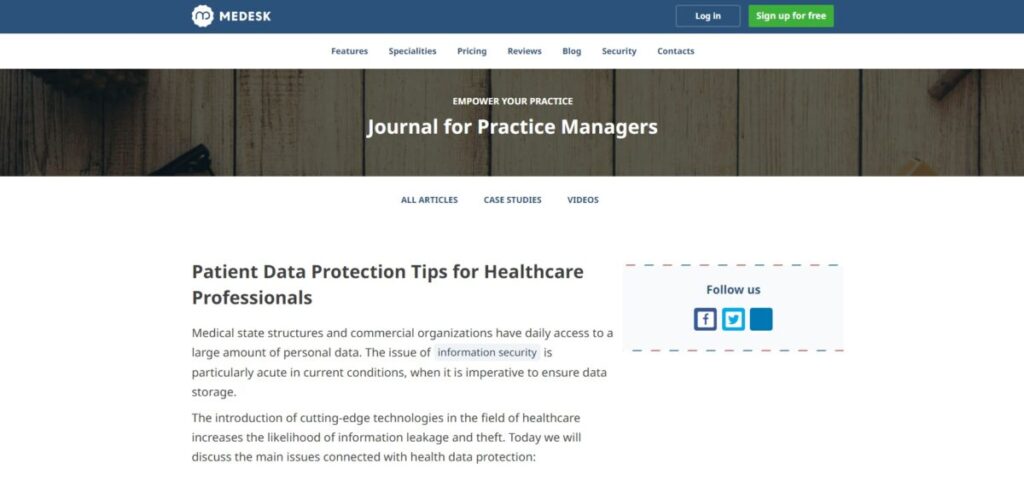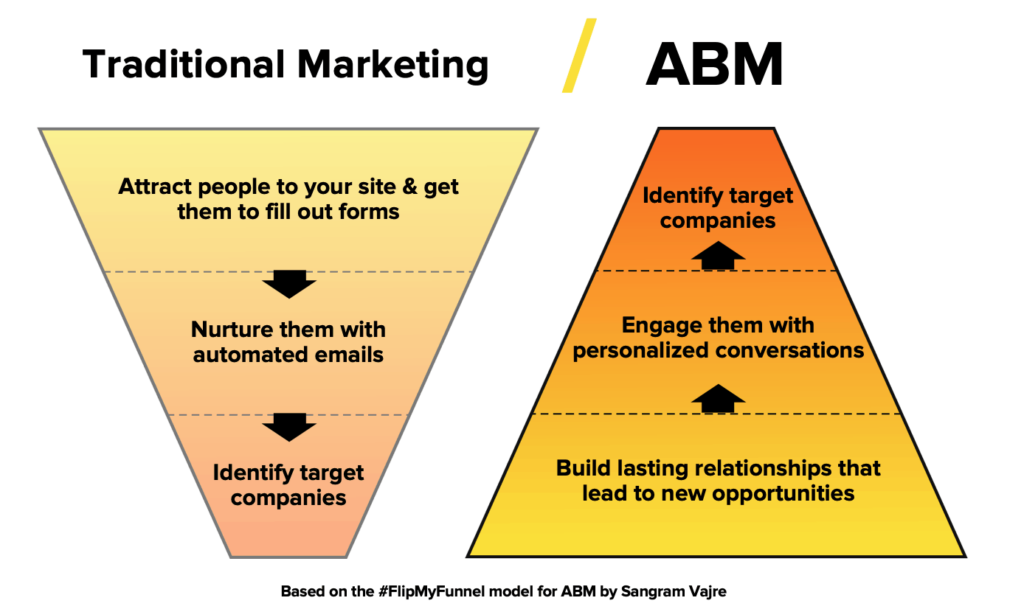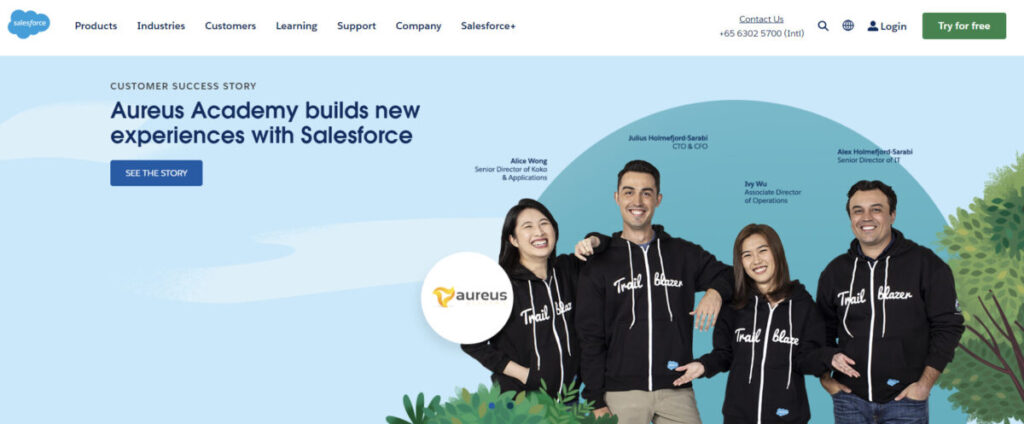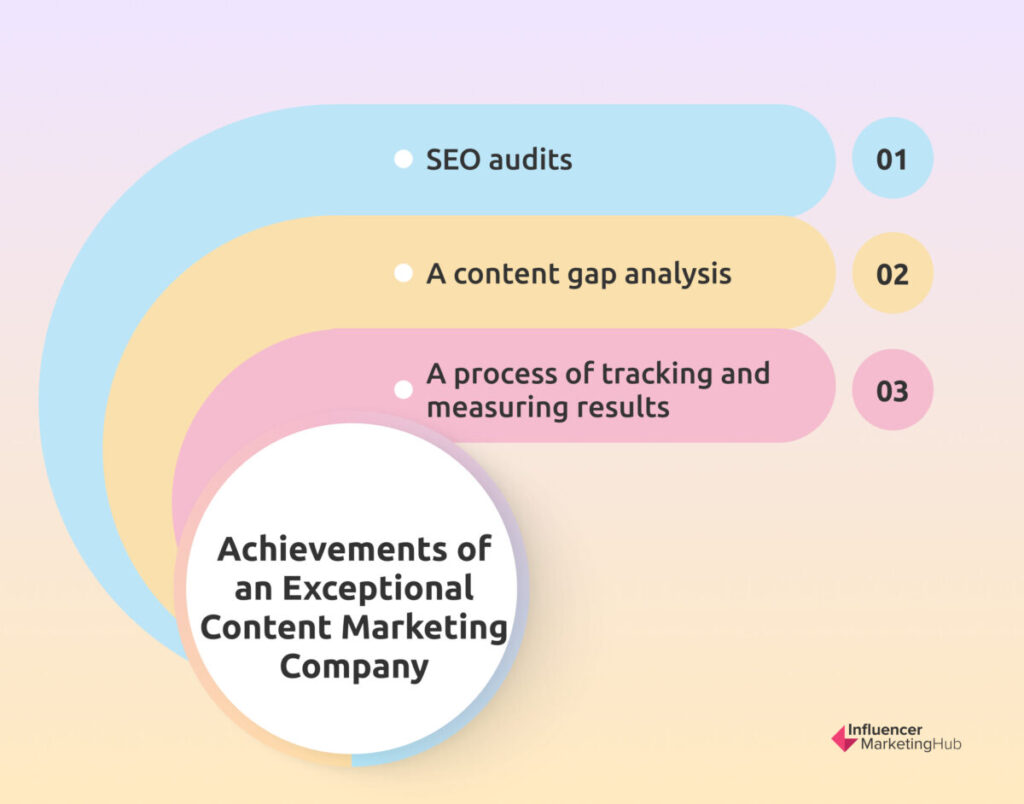Welcome to the world of B2B content marketing in 2024, where change is constant. Content strategies are vital for businesses, but it's crucial to understand that content is not static or a one-and-done entity. It is a living, breathing document that demands perpetual evolution and adaptation to cater to the ever-shifting landscape of B2B buyers.
Content marketing has undergone substantial changes in recent years. Platforms, algorithms, and consumer preferences are constantly changing. For example, social media algorithms have shifted, and video content has reshaped digital marketing. It would be best to have an agile content marketing strategy that adapts to emerging trends to succeed.
Stay Ahead With These Compelling B2B Content Strategies in 2024:
Evolve with The Changing Landscape of B2B Content Marketing
Traditional B2B marketing relies on a linear model to convert prospects into customers. Key performance indicators, including pipeline velocity, assess this approach. Major CRM tools and platforms are built around this B2B buying model.
But today, B2B is starting to align with the dynamic B2C model, influenced by individual consumer behavior. This transformation results from a tech-savvy workforce and broader societal shifts, with Millennials and Gen Z now holding key decision-making positions. As such, part of the changing landscape is understanding the modern-day B2B buyer.
Digital natives have a distinct way of seeking information, comparing options, and making decisions. They seek detailed product information, including images and videos showcasing product functionality. Advanced search features are a priority for quick product retrieval. The preference is for mobile-friendly access. Remarkably, up to 80% of B2B customers expect to go through a buying experience.
Another significant difference is their growing desire for autonomy. This marks the rise of the self-serve consumer, seeking immediate access to information and the ability to test solutions and products independently. Notably, this self-serve approach blurs the lines between B2C and B2B. Data indicates that 75% of B2B consumers don't want to interact with a rep. They avoid lengthy sales presentations and opt for quick access to demos and pricing information.
To harness these trends, consider the following tips:
Provide self-service pricing information.
B2B buyers spend more time researching online than any other part of their buying journey. Your pricing should no longer be a secret. Prospective customers want to see the price upfront to streamline their evaluation process.
This also impacts your sales team, transforming them into facilitators of confident digital decision-making. Although concerns like competitors accessing your prices may arise, providing a frictionless experience is wiser.
Streamline the B2B decision process.
Decision-making is multifaceted in the non-linear B2B landscape, with buyers inundated by information. B2B decisions involve numerous stakeholders and varied information sources. To ease initial decision-making stages and align with product-led growth principles, offer hands-on product experiences. This simplifies decision-making by allowing prospects to directly explore the product's functionality, benefits, and relevance to their needs. This is highly effective in industries with complex solutions, such as SaaS, where product trials are standard.
Harness the power of B2B reviews.
B2B reviews significantly impact buying decisions, spanning marketing agencies, software, and business services. An impressive 87% of consumers factor in reviews when making purchase decisions, and this practice influences the earlier stages of the buying process. Reviews have evolved into a means of discovering solutions, not merely offering reassurance at the point of purchase.
Tie-In Effective B2B Market Research and Content Strategy Alignment
B2B market research involves gathering data about what potential customers need and want. This research encompasses various aspects such as brand perception, product suitability, customer service needs, sales and marketing strategies, and more. It entails sampling your target audience to understand their goals and preferences. By gaining insights into your potential audience's thoughts, feelings, and actions, you can enhance your content strategy to attract your target market more effectively.
Why do you need to conduct B2B market research? Here are three key benefits:
- Enhanced ROI: You can precisely target customers and boost brand engagement with comprehensive business research. Tailoring your offerings to their preferences increases their spending with you.
- Stay Updated on Customer Mindsets: Customers' needs and wants evolve regularly, making relying solely on past behavior challenging and outdated. B2B market research informs you about new developments and helps you stay ahead of market changes.
Attract Larger Customers: Market research is essential for identifying your competitive edge or the necessary actions to attain it to compete beyond small-scale ventures. The symbiotic relationship between market insights and content strategy is predominant. Market research provides insights into your audience, industry trends, and competition, shaping your content strategy. Here's how they work together:
Market Insights Inform Content
Market insights act like treasure maps, pinpointing customer needs, pain points, and preferences. Knowing your audience's preferences and pain points through research allows tailored content that engages and builds trust, supporting your business goals. When used well, they help create highly targeted content that forges stronger connections with your audience.
Let's take an example of a SaaS company looking to tap into the healthcare industry. Research shows that healthcare experts frequently face data security challenges. With this knowledge, you can focus your content strategy on creating articles, whitepapers, and webinars about advanced encryption solutions, much like what practice management software Medesk did. It provided extensive content on data protection for its target audience. This tailored approach addresses a specific issue and establishes your company as an industry expert, building trust and credibility.

Source: medesk.net
Competitive Analysis
Competitive analysis involves studying your competitors' content strategies to discover what works and what doesn't. This analysis helps you assess your campaigns, identify gaps in your content, and keep it current. You can better understand the market by looking at your competitors' strengths, weaknesses, and strategies.
Competitive analysis examples are the benchmark reports from HubSpot, Influencer Marketing Hub, and other authoritative sources. These reports regularly explore industry benchmarks, showing how successful companies structure their marketing efforts. For B2B professionals, this data is gold when developing content that will resonate well with the target audience.
Measuring Success
Consistent content tracking and analysis are vital to achieve effective results. Accurate measurement enables content optimization and enhances organic traffic. Here are the three critical content-tracking areas for B2B companies:
- Conversion Rate: The ultimate marketing goal is conversions, turning your target audience into paying customers and boosting revenue.
- Organic Website Traffic: Keep a close eye on your website's traffic to gauge overall performance and the effectiveness of your SEO efforts. Organic search drives 53% of all business website traffic, making it the primary source of measurable web traffic.
- Social Media Engagement: Understanding how your audience engages with your content offers valuable insights. It reveals what they find helpful, what drives them to explore your website, and the solutions they seek.
Maximize Content Pillars
Content pillars are foundational pieces that support your content strategy. They represent the overarching themes that structure your content, often taking the form of substantial assets like eBooks, whitepapers, videos, or research reports. These can be broken down into smaller components, including blog posts, infographics, and emails.
When crafting content pillars, the goal is to delve deeply into your chosen topic, offering authoritative, comprehensive information. As your website grows and more content is added, you can introduce additional pillars and themes. While expanding your content portfolio with more minor, detailed pieces, focus on connecting them through interlinks.
Content Hub
A prime example of the content pillar concept is a content hub, where your crucial marketing content is centralized and presented to potential customers. Through a content hub, customers gain access to omnichannel content available to them at their convenience. A well-crafted content hub is pivotal for a successful buyer journey, as it allows customers to explore the wealth of content you've developed.
For instance, NerdWallet, a leading figure in finance, has a robust content hub dedicated to educating audiences on personal finance. Notably, this hub uses vibrant colors to highlight information rather than relying on detailed imagery, potentially enhancing the site's loading speed due to its extensive content repository.

Source: nerdwallet.com
Moreover, the hub organizes content above the fold, categorizing it based on tasks users may want to accomplish. This strategic categorization effectively guides audiences to the content most relevant to their needs, thus enhancing their overall site experience.
Content pillars offer several benefits for both you and your customers:
- Improved SEO: When other sources link to your content pillar, Google recognizes it as authoritative, elevating your rankings. This drives traffic to your website, creating opportunities to generate leads and initiate the buyer journey.
- Engaging Customer Experience: An extensive and detailed content pillar provides customers with a valuable and engaging learning experience. Infuse your content pillars with relevant calls to action to convert the increased traffic and attention into more leads and conversions.
- Time Efficiency: Content pillars save you and your customers’ time. Even those who don't ultimately buy your products appreciate the detailed and specific information, sparing them from additional research. This goodwill strengthens relationships and may convert these prospects into customers.
Leverage ABM Marketing and Personalization
Account-based marketing (ABM) isn't a technology; it's a strategic approach. It emphasizes a customer-focused strategy achieved through the collaboration of sales and marketing. These teams work together to create tailored account experiences, aiming to maximize revenue with efficiency. Unlike broad marketing to a wide audience, B2B companies using ABM concentrate resources on specific client accounts.
Traditional marketing aims to drive traffic, generate leads, nurture them, and secure sales. ABM reverses this process. It starts by identifying a few key targets that hold substantial value for your company. It doesn't focus on individual customers but instead on targeting entire organizations.

Source: bol-agency.com
A prime example is Adobe using ABM marketing on LinkedIn. Previously, they had to sift through lengthy, sometimes outdated, contact lists to locate target accounts and engage in cold calling to promote their product. Transitioning to LinkedIn streamlined their ABM program, allowing Adobe to connect with key accounts and decision-makers effortlessly.
Their marketing and sales teams collaborated to identify the appropriate leads. They employed the platform to deliver tailored content to convert these key accounts into paying customers, eliminating the need for time and money spent on cold-calling prospects.
Personalization and Customization
Personalization and customization are integral to ABM marketing. These include content customization, product information, communications, and campaigns for each target account. This tailored approach maximizes your relevance among these accounts. By demonstrating how your products, services, and offerings address their challenges, ABM positions your business as the ideal choice for your target accounts.
You don't have to begin from scratch. Instead, audit your current content and expand from there. Determine the channels and messaging based on your knowledge of the accounts. Organizations often structure ABM campaigns around verticals or products and fine-tune messaging for specific titles or pain points.
Use One or More Visuals
Over the past decade, long-form videos, such as webinars and live events lasting over 30 minutes, have experienced extraordinary growth, surpassing 11,000%. This growth underscores the human inclination towards visual content. Visual content simplifies complex concepts, aiding decision-makers in grasping and retaining critical information. This engagement is particularly vital when addressing the analytical mindset of professionals like you.
Visual content's versatility is noteworthy, serving diverse functions. It can be used across multiple channels, spanning websites, social media, presentations, and email campaigns. This adaptability guarantees a consistent message throughout the customer journey.
Four types of visuals stand out as powerful tools for conveying complex information effectively:
Infographics
They present data and complex information in a visually engaging and easily digestible manner. Infographics succinctly convey key insights, enhance brand visibility, and positively impact SEO. For instance, using an infographic to showcase a product's features can swiftly communicate its value proposition to potential clients. This visual format fosters higher engagement and encourages content sharing, ultimately driving lead generation.
Charts and Graphs
Charts and graphs highlight trends, comparisons, and patterns that may go unnoticed in text-based data. This aids in decision-making, strategy planning, and performance tracking. Additionally, they enhance content engagement, boosting audience retention and interaction.
Product or Service Images
High-quality images of products or services serve as a tangible representation of their features and benefits. A quick visual assessment lets buyers grasp the product's color, pattern, style, shape, and quality more efficiently than reading detailed descriptions.
Videos
Agencies for video marketing are growing, unsurprisingly, since videos captivate audiences with dynamic content. They excel at explaining intricate concepts, demonstrating product functionality, and conveying a brand's personality. Thanks to video-sharing platforms, expanding your reach to a broader B2B audience has become effortless.
Small and large businesses have established a solid online presence, making creating and sharing video content easier. This content attracts potential customers and elevates your business's online visibility. It's worth noting that social videos garner an astonishing 1200% more shares than combined text and image content.
Showcase Thought Leadership and Expertise
Use content channels like case studies, webinars, and live sessions to establish thought leadership and expertise. These methods engage your audience and demonstrate your brand's industry authority.
Case Studies
Case studies are a powerful tool to guide potential customers through the sales funnel. Unsurprisingly, nearly two-thirds of B2B content marketers employ this strategy. They effectively address your potential customers' questions: Do you understand their challenges and needs? Do you have a viable solution, and does it yield tangible results? Case studies provide these answers in a manner that conveys credibility, which traditional sales-driven advertisements cannot match. A prime illustration of this approach can be seen on Salesforce's page featuring customer success stories.

Source: salesforce.com
Webinars
Webinars have revolutionized event hosting. They serve numerous purposes, including product promotion, expert education, and audience interaction. You can choose between real-time or prerecorded webinars to gather leads and enhance your presence in competitive markets. Webinars are flexible, with replay options for busy schedules and easy sharing across platforms. Prerecorded webinars provide lasting "evergreen" content for lead generation with minimal effort. Here’s a list of some recently-concluded webinars you can look into.
Live sessions
In the B2B world, human connections remain irreplaceable, especially for events. Live events offer face-to-face interactions, product showcases, and a wider audience, making them perfect for customer connections, brand visibility, peer networking, feedback gathering, and top-funnel lead generation. Inbound by HubSpot is an excellent example of in-person events.
Final Thoughts
In B2B marketing, delivering compelling and current content is crucial. It grabs your audience's attention and establishes your industry authority. This attracts potential clients and builds trust and credibility, making your brand a dependable information source. Staying current with industry trends for 2024 and beyond and addressing your audience's pain points positions your business as a problem solver, boosting lead generation and nurturing valuable business relationships.
Frequently Asked Questions
Why is a content strategy essential in B2B marketing?
B2B marketing needs a content strategy to engage and educate its target audience, build brand authority, and drive lead generation by providing valuable and relevant information.
What is ABM marketing?
ABM (Account-Based Marketing) is a precise approach concentrating on individual accounts or businesses, rather than mass audiences. It customizes marketing efforts to high-value accounts, aiming for personalized connections and conversions. They are typically applied in B2B marketing to target key accounts and decision-makers.
What is the most used type of visual for content?
Video stands out as the top visual choice for content and is highly effective. About 50% of marketers incorporate video in their strategies, closely followed by images, utilized by 47%.



